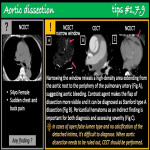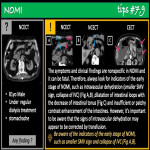Learning objectives
This educational poster aims to help you learn the following topics:
Background or the underlying causes of diagnostic errors in CT in the ER
Critical diseases you are easy to overlook and 10 ways to avoid oversights
By learning these contents, you will enhance your ability to reduce oversights of CT findings in the ER, starting tonight!
Background
In recent years, there has been an increase in emergency patients, especially among the elderly.While CT scans are commonly utilized in the ER, there are some situations where accurate diagnoses may not be achieved due to various factors, such as the use of NCECT in cases when Contrast-enhanced CT should be administered or the presence of non-specific clinical presentations.This poster introduces common patterns of oversights and various methods to avoid them while presenting CT or MRI images.12 diseases and 10 tips covered in this poster...
Findings and procedure details
Subarachnoid hemorrhage: tips #1,6,7,8 (Fig 2)By narrowing the window, the findings become easier to see(Fig A), and they can be identified more easily in the bottom slice (Fig B).In supratentorial area, by comparing with a previous image, you can recognize a slight enlargement of the inferior horn of the lateral(niko-niko sign), which is associated with SAH (Fig C).Narrow the window setting. Look at the images thoroughly. Compare with past images to identify subtle changes.Cerebellar infarction: tips #1,10(Fig 3)In narrow window, a low-density area is seen...
Conclusion
Radiologists must constantly be aware of the risk of oversights and master specific methods to avoid them.
Personal information and conflict of interest
K. Miyakawa:
Nothing to disclose
J. Matsumoto:
Nothing to disclose
H. Ishida:
Nothing to disclose
Y. Michishita:
Nothing to disclose
H. Mimura:
Nothing to disclose















